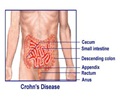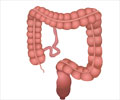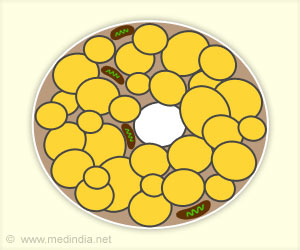Lining the upper portion of the small intestine with an impermeable sleeve can help lose weight and restore normal glucose metabolism.
Experiments on an animal model of obesity-induced diabetes have shown that lining the upper portion of the small intestine with an impermeable sleeve can help lose weight and restore normal glucose metabolism
The study conducted by researchers at the Massachusetts General Hospital (MGH) Weight Center and Gastrointestinal Unit is the first controlled test of a new procedural approach to treating obesity.Reporting their findings in the journal Obesity, the researchers said that the procedure reproducing several aspects of gastric bypass surgery led to a significant reduction in the animals' food intake and a resolution of diabetes symptoms.
"This is a clear proof of principle that the human version of this device may be an effective treatment for obesity and diabetes. The clinical device would be placed endoscopically, making it far less invasive than surgical therapies," says lead researcher Dr. Lee Kaplan, director of the MGH Weight Center.
"The next step will be to complete large-scale controlled trials of this procedure in human patients. We also need to learn more about how this device affects the complex interplay between receptors that line the stomach and intestine - which are stimulated by ingested food - and the brain, pancreas, liver and other organs involved in metabolism and in eating behaviour," the researcher added.
A 10-cm-long impermeable sleeve was used to line the duodenum and upper jejunum of rats. It was found to prevent the sensing and absorption of nutrients in that area, and also to deliver relatively undigested nutrients to the lower jejunum.
The researchers implanted the device, called an endoluminal sleeve, in eight rats that had been brought up on a high-fat diet, resulting in obesity and mild diabetes. Another eight rats underwent a similar procedure without implantation of the endoluminal sleeve.
Advertisement
The researchers observed that animals who had received the device took in almost 30 percent fewer calories than did those receiving the sham procedure, and that the treated rats weighed 20 percent less than the control group by the seventh week after the procedure and maintained that weight loss during the 16-week study period.
Advertisement
With a view to determining whether the endoluminal sleeve could prevent obesity, the research team implanted the device in rats genetically prone to rapid weight gain but lean since they had been brought up on a low-fat diet.
The treated rats and a control group were then given access to a high-fat diet. While both groups gained weight during the postsurgical period, most of the rats receiving the endoluminal sleeve ate less than the control rats and weighed 12 percent less four weeks after the procedure.
When the researcher examined the treated rats that had gained as much as the controls, they observed that the sleeves had become detached and were eventually excreted.
"A key finding of this study is that the device induced a decrease in food intake as part of its effect and does not act by reducing absorption of nutrients. Like gastric bypass, it appears to change the way that neural and endocrine signals stimulated by nutrients act on their target organs. We still don't know much about the mechanisms underlying these effects, but we and several other groups are working hard to improve our understanding," said Kaplan, an associate professor of Medicine at Harvard Medical School.
Source-ANI
SPH














